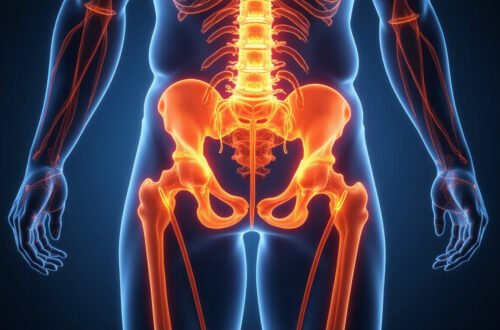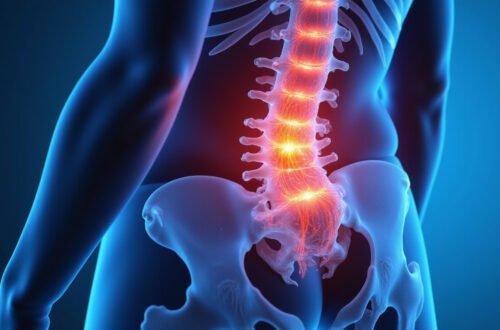In a world where stressors abound and physical discomfort is common, finding effective methods for pain relief has become a priority for many individuals.
One increasingly popular option is manual therapy techniques, which offer a hands-on approach to healing.
Whether you’re dealing with chronic pain, recovering from an injury, or simply looking to improve your overall wellness, understanding and embracing these techniques can make a significant difference in your quality of life.
In this article, we’ll explore the fundamentals of manual therapy, how it works, the various techniques employed, its benefits, and how you can seamlessly integrate it into your self-care routine.
Your Sciatica Pain-Free Future Starts Here – Click to Learn More!
Key Takeaways
- Manual therapy techniques offer targeted approaches to alleviate pain and improve mobility.
- Understanding how manual therapy works can enhance its effectiveness in pain management.
- Common techniques include massage, manipulation, and mobilization, each tailored to specific needs.
- Incorporating manual therapy into your self-care routine can lead to significant wellness benefits.
- Embracing manual therapy as part of a holistic health strategy contributes to overall well-being.
Introduction to Manual Therapy Techniques
Manual therapy techniques are a set of hands-on methods employed by healthcare professionals, particularly physical therapists and chiropractors, to alleviate pain and restore mobility.
These techniques include manipulation, mobilization, soft tissue work, and stretching, all aimed at enhancing the body’s natural healing process.
Patients seeking relief from musculoskeletal pain often find that manual therapy techniques not only reduce discomfort but also improve their overall function and quality of life.
By focusing on the body’s mechanics, practitioners can address issues such as joint restrictions, muscle tension, and chronic pain conditions, making these methods a vital component of rehabilitation and preventive care.
How Manual Therapy Works for Pain Relief
Manual therapy techniques are widely recognized in the field of physical therapy for their effectiveness in alleviating pain and improving mobility.
These hands-on therapeutic methods involve skilled manipulation of muscles, joints, and soft tissues, allowing therapists to target specific problem areas.
By using techniques such as joint mobilization, soft tissue release, and stretching, practitioners can enhance circulation, reduce muscle tension, and stimulate the body’s natural healing processes.
Additionally, manual therapy can provide immediate pain relief, making it an excellent complementary treatment for conditions like chronic back pain, migraines, and arthritis.
Overall, understanding how these manual therapy techniques work can help individuals make informed decisions about their pain management strategies.
‘The human body has an extraordinary capacity to heal itself, and sometimes all it takes is the right touch.’ – Anonymous
Common Manual Therapy Techniques Explained
Manual therapy techniques are non-invasive treatments used to alleviate pain, improve mobility, and enhance overall function.
These techniques involve the skilled use of hands to manipulate soft tissues and joints, focusing on the body’s musculoskeletal system.
Common manual therapy techniques include joint mobilization, which gently increases the range of motion in a joint, and myofascial release, aimed at relieving tension in the fascia surrounding muscles.
Deep tissue massage is another popular approach that targets deeper layers of muscles to reduce chronic pain and tightness.
Additionally, trigger point therapy focuses on specific knots within the muscle tissue that can cause pain elsewhere in the body.
By understanding these manual therapy techniques, individuals can work with their healthcare providers to address specific issues and improve their physical well-being.
Your Sciatica Pain-Free Future Starts Here – Click to Learn More!
Benefits of Manual Therapy for Wellness
Manual therapy techniques are an integral part of holistic wellness, offering numerous benefits that promote physical and mental health.
By using hands-on methods such as mobilization, manipulation, and soft tissue techniques, practitioners can alleviate pain, improve circulation, and enhance joint function.
One of the primary advantages of these techniques is their ability to reduce muscle tension and stress, allowing for greater relaxation.
Additionally, manual therapy can accelerate recovery from injuries by improving tissue flexibility and range of motion.
Many people also find that integrating these techniques into their wellness routine helps maintain overall balance and harmony in the body.
Furthermore, when combined with other treatments such as exercise and nutrition, manual therapy techniques can lead to significantly improved outcomes in one’s overall health journey.
Integrating Manual Therapy into Your Self-Care Routine
Incorporating manual therapy techniques into your self-care routine can significantly enhance your overall well-being.
Manual therapy encompasses various hands-on approaches used to treat musculoskeletal pain and improve mobility.
By understanding and integrating these techniques, such as myofascial release, deep tissue massage, and joint mobilization, you can alleviate tensions and promote relaxation right from the comfort of your home.
Start with simple stretches and self-massage methods that target high-stress areas, and gradually explore more advanced manual therapy techniques, whether through guided videos or professional workshops.
This proactive approach not only aids in recovery after intense physical activity but also becomes a vital part of your mental wellness strategy.
By regularly practicing these techniques, you can foster a deeper connection to your body and enhance your self-care practices.
FAQs
What are manual therapy techniques?
Manual therapy techniques involve hands-on methods used by therapists to manipulate muscles, joints, and soft tissues to relieve pain, improve function, and enhance mobility.
How does manual therapy help relieve pain?
Manual therapy helps relieve pain by improving circulation, reducing muscle tension, and facilitating the healing process through the physical manipulation of body structures.
Are there any risks associated with manual therapy?
While manual therapy is generally safe, there may be risks if performed by untrained individuals or on certain medical conditions.
It’s important to consult a qualified therapist to assess your individual needs.
Can I integrate manual therapy into my self-care routine?
Yes, you can incorporate manual therapy into your self-care routine by using techniques such as self-massage, foam rolling, and guided stretching, along with seeking professional treatment.
What are the long-term benefits of regular manual therapy?
Regular manual therapy can lead to improved mobility, reduced chronic pain, enhanced quality of life, and a better overall sense of well-being, making it a valuable part of a holistic wellness approach.






